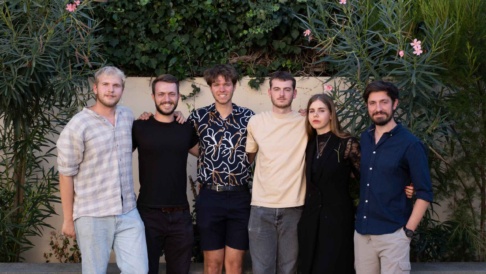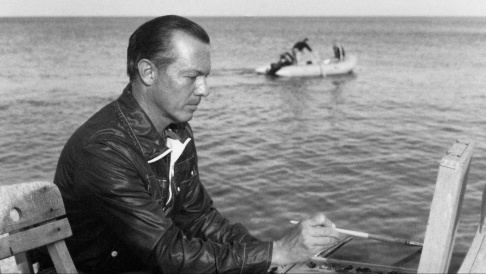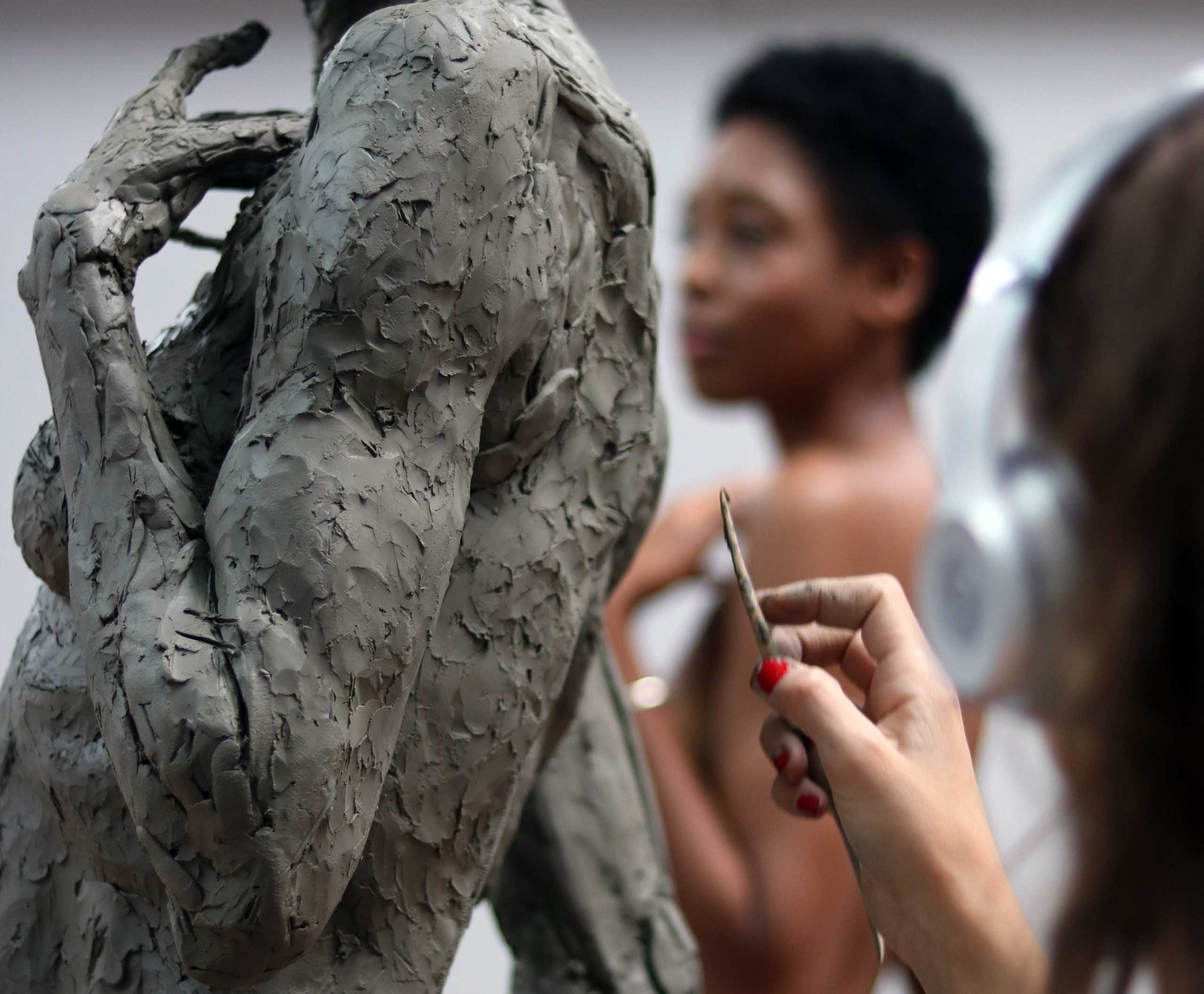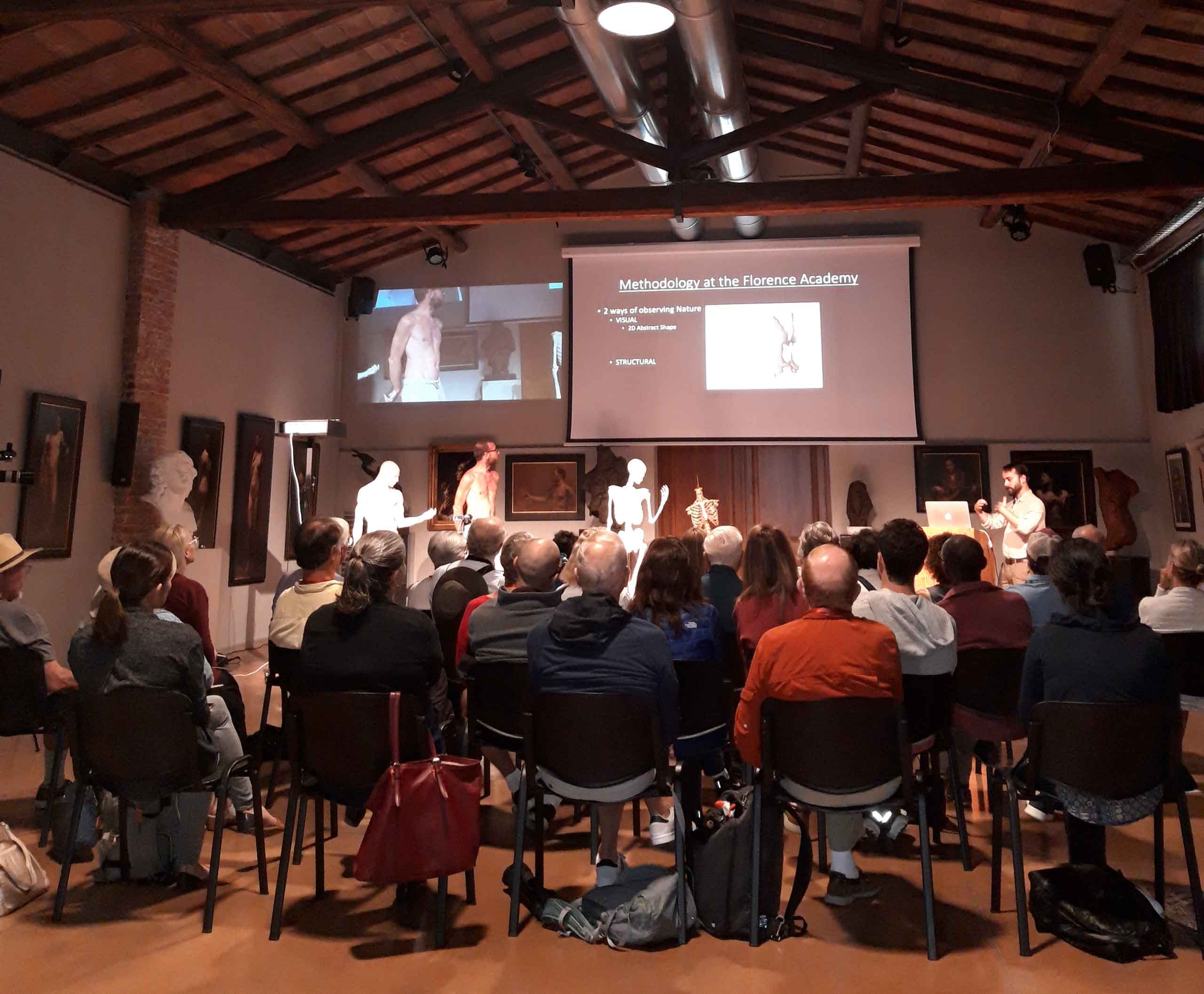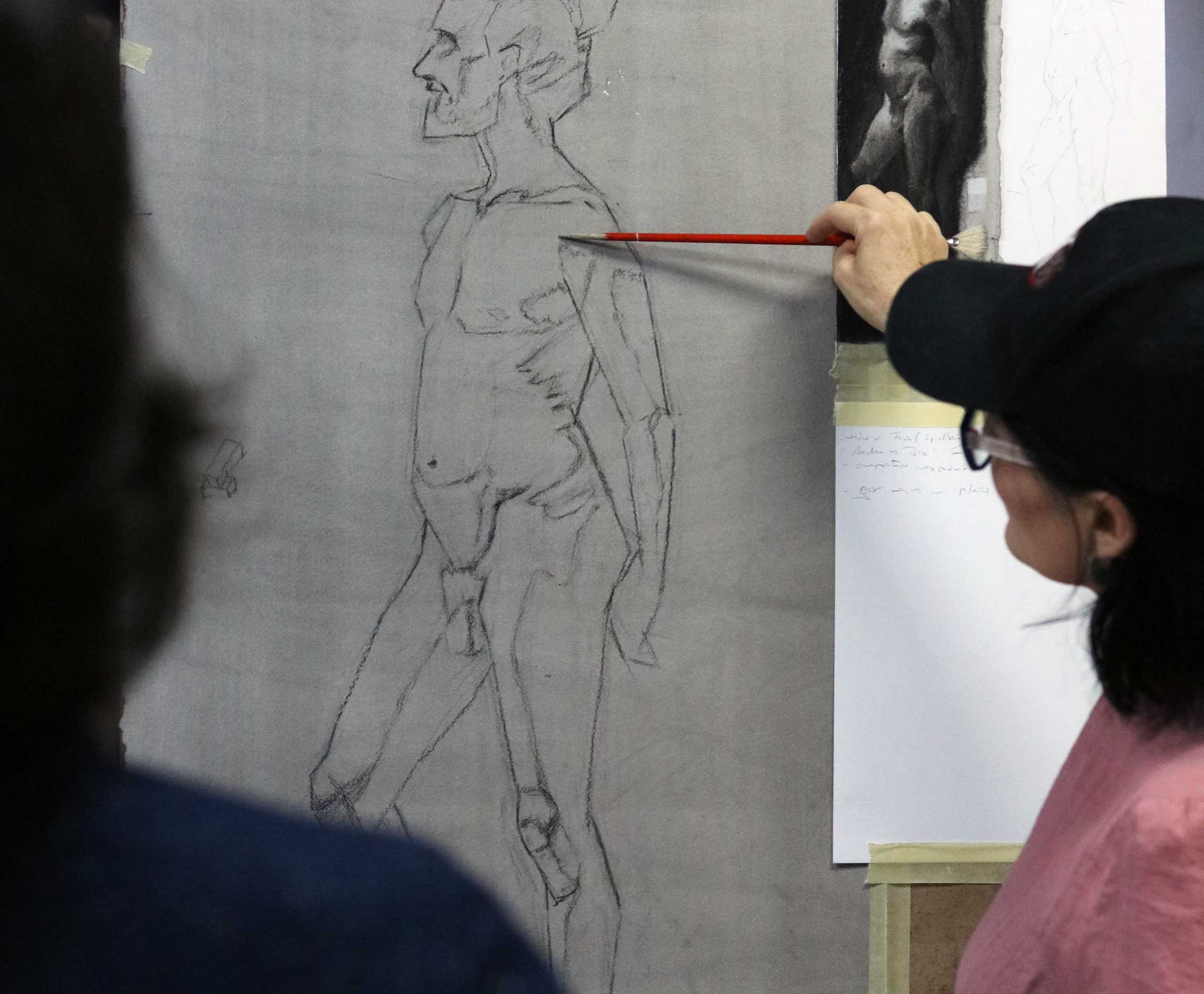About
this course
Sculpture is offered in Florence. Our program provides a strong foundation in sculpture by focusing on the development of primary craft skills. In order to understand the complexities of form in space, the program emphasizes the use of observation and structural knowledge to develop a capacity for visual judgment and visual accuracy. Students are taught not to stray towards mannerism. Also central to the program is teaching students to be self-critical.
The program is broken down into lessons in sculpture and lessons in drawing. Drawing is considered a fundamental skill for sculptors; when students are able to achieve an accurate rendering in 2 dimensions they can apply this knowledge to the more complex task of observing and rendering a sculpture with its multiple viewpoints. Students therefore will spend three hours five days a week drawing the live figure in charcoal. They will also have two hours one evening a week when they will draw the live figure in pencil. Students learn to draw on a light background to concentrate on line and emphasize the total silhouette. Precision of this outline is crucial for accuracy, as comprehending the figure’s geometry by locating and connecting the bony points will help the sculptor find and explain specific forms in clay.
1st year
Beginning Sculpture
“We sculptors have a greater goal: to develop an aesthetic vocabulary to fully express one’s ideas as they develop in one’s work.” – Robert Bodem, Former Director Sculpture Program
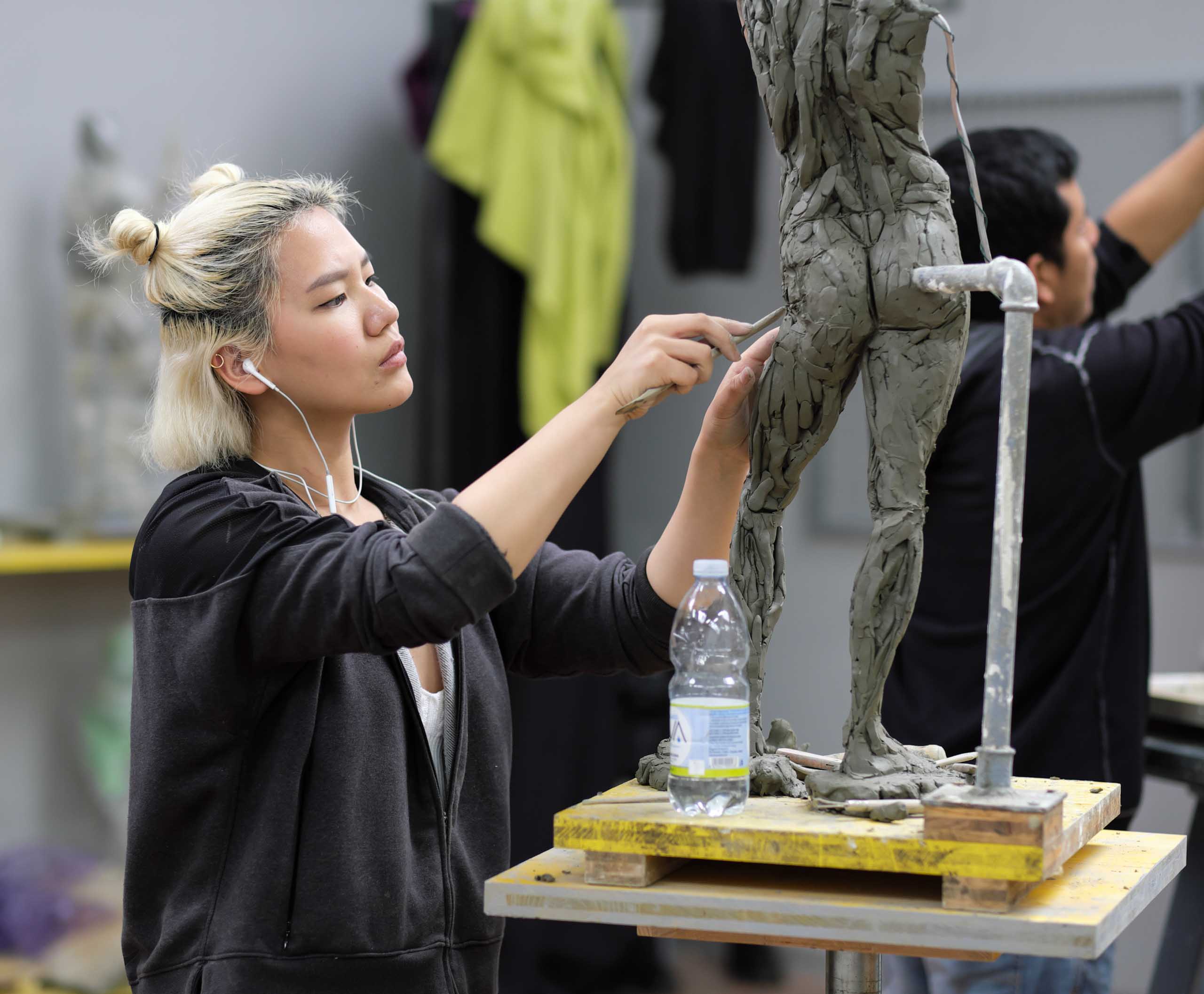
Beginning Sculpture
1st year | 22.5 credits
Students learn to focus at the start of a project on those essential elements that allow then to obtain a likeness in pose and structure of their subject.
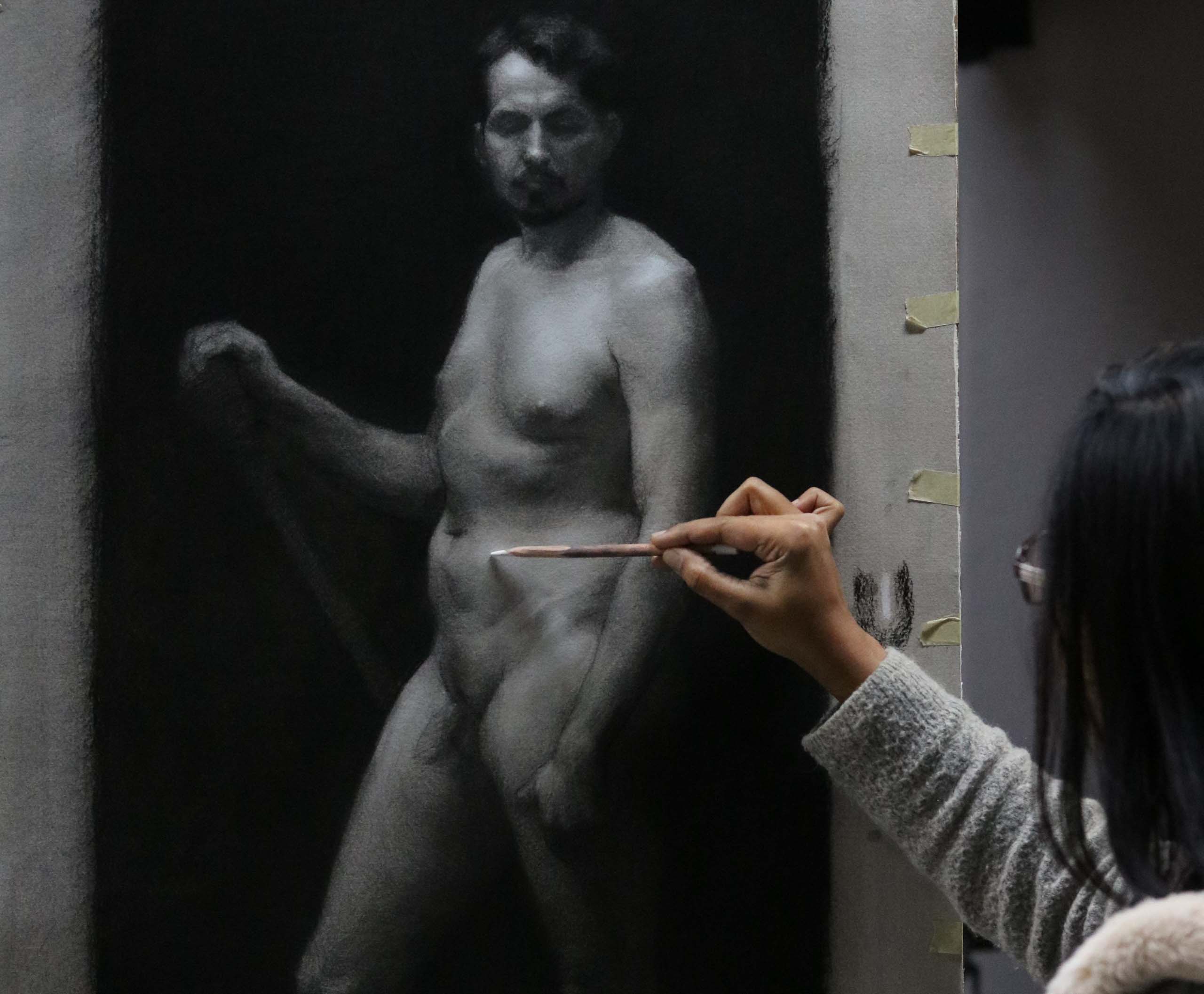
Sculpture Drawing
1st year | 22.5 credits
When students are able to achieve an accurate rendering in 2 dimensions they can apply this knowledge to the more complex task of making sculpture.
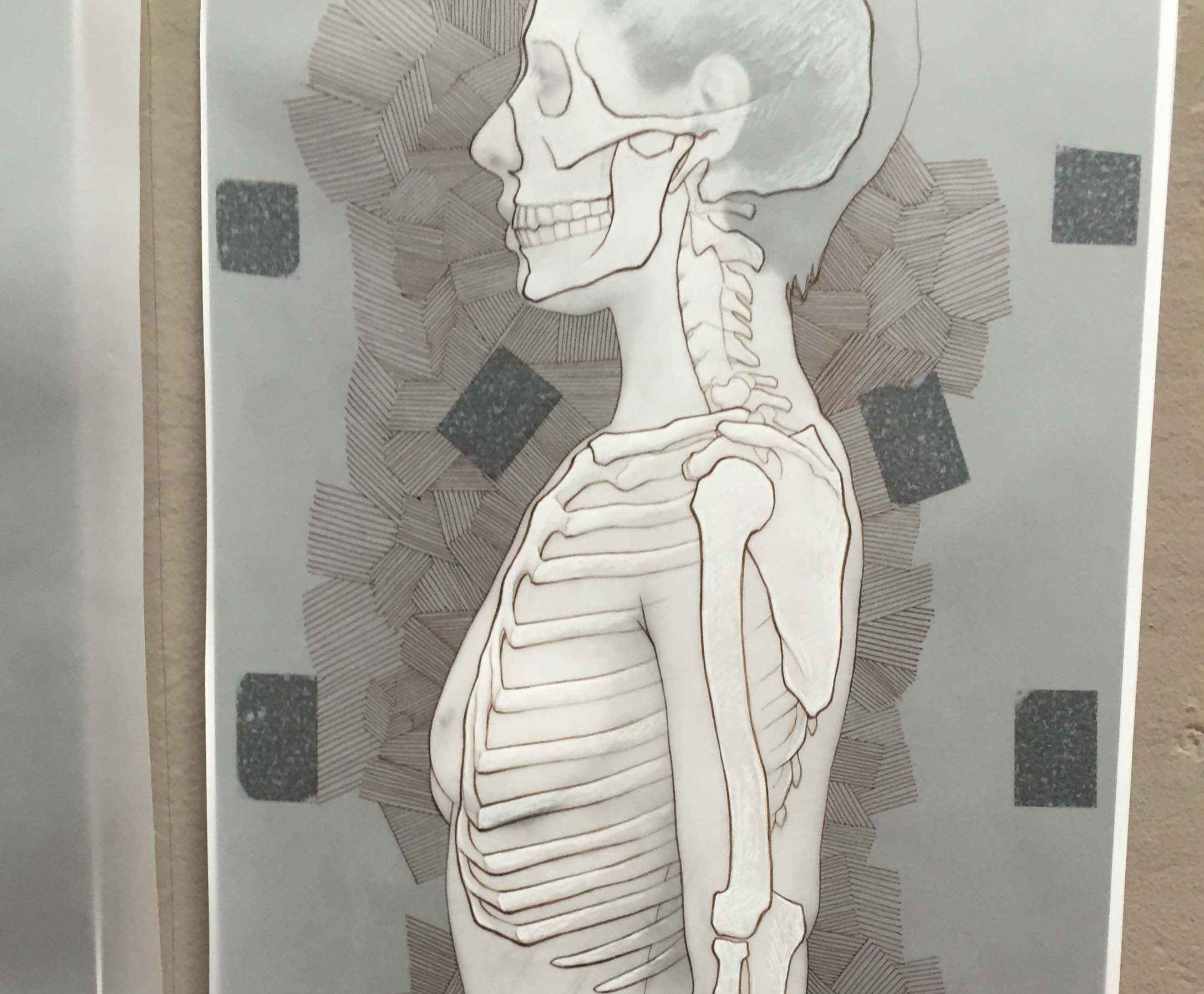
Anatomy
1st year | 3 credits
Weekly lectures begin with a discussion of the skeleton and myology, the study of the muscles, then move to drawing exercises with the model.
2nd year
Intermediate Sculpture
“There is no problem nor solution that is not a drawing investigation. Meaning, in short, stepping back from your work and making objective decisions about heights, widths, relative angles, contour, gesture, structure, proportion, spacial relationships, visual impression, etc. Even the ever so illusive volume and topography of form is ultimately discovered through drawing. A successful sculpture is a successful drawing, albeit in space, in clay, and in three dimensions.” – Mitch Shea, Director, Sculpture Program
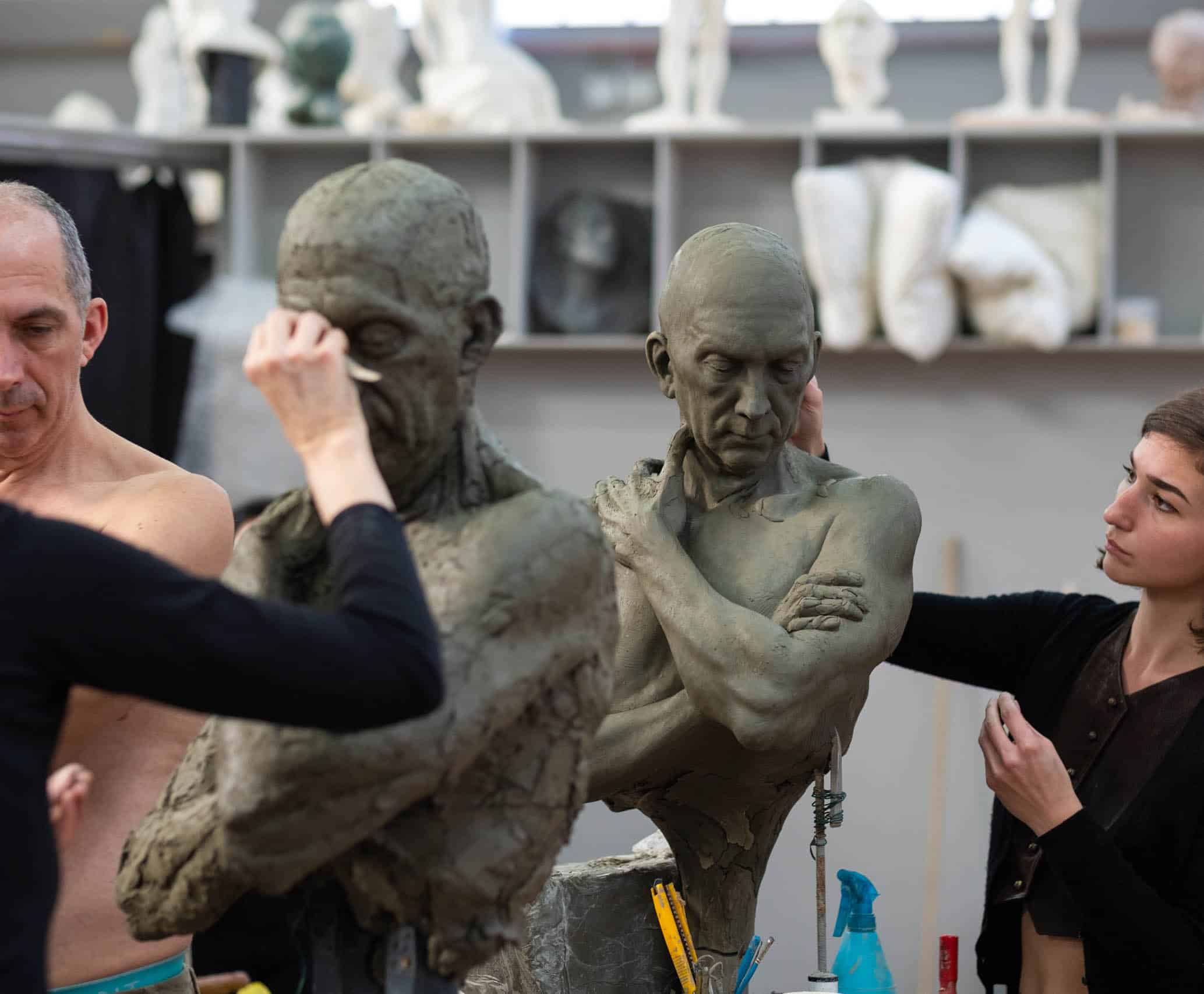
Intermediate Sculpture
2nd year | 22.5 credits
During the intermediate curriculum, students confront modeling form by working 1/2 life-size during the first trimester, and life-size for the remainder of the year.
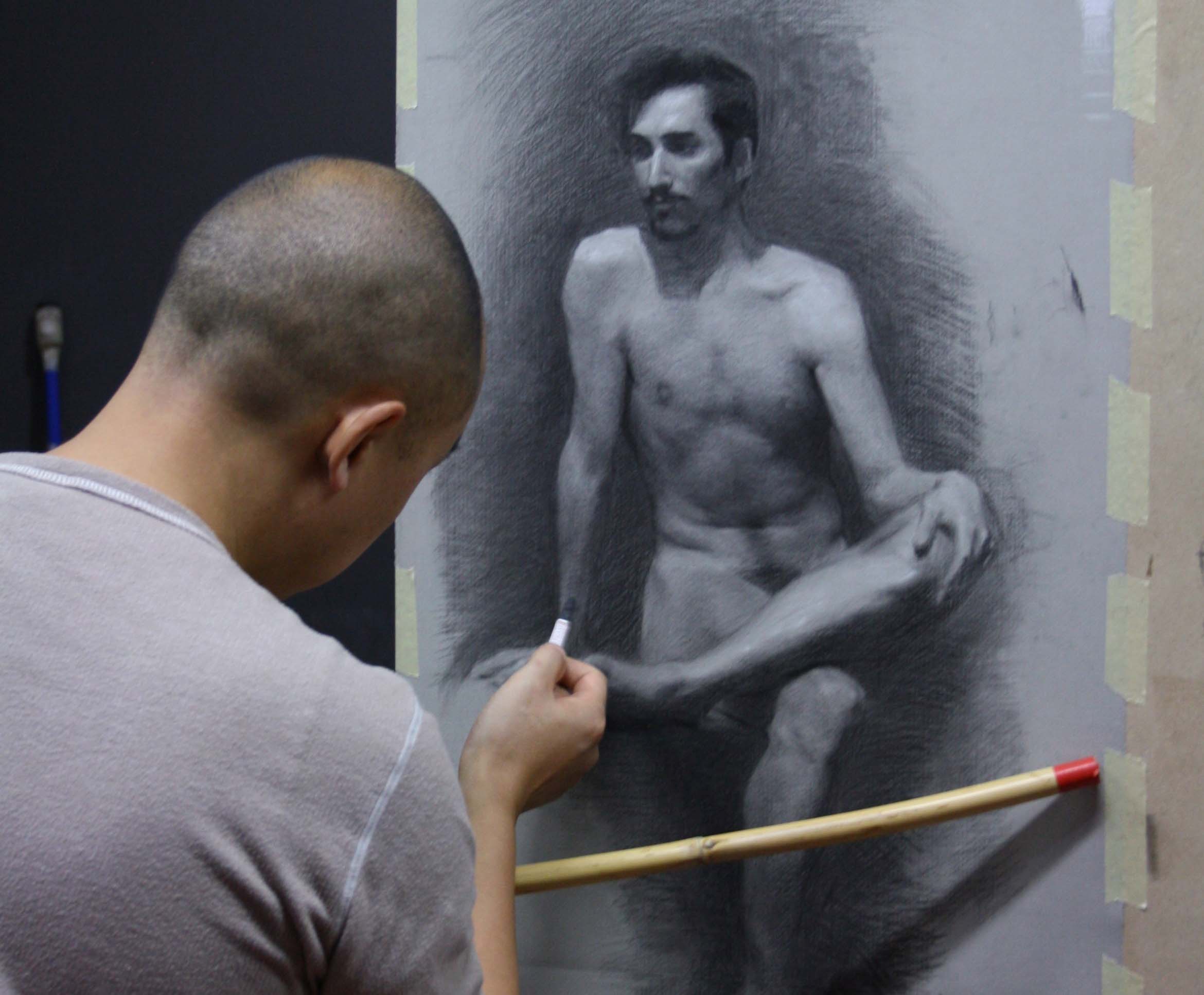
Sculpture Drawing
2nd year | 22.5 credits
When students are able to achieve an accurate rendering in 2 dimensions they can apply this knowledge to the more complex task of making sculpture.
3rd year
Advanced Sculpture
“Working directly from life poses unique challenges to the artist. The natural world cannot be copied – it must be interpreted. In the absence of an intermediary, like photography, to assist in the translation of the subject, the artist is guided only by his or her individual exploration of the subject to create a uniquely personal representation of reality.” – Unknown author (overheard at FAA)
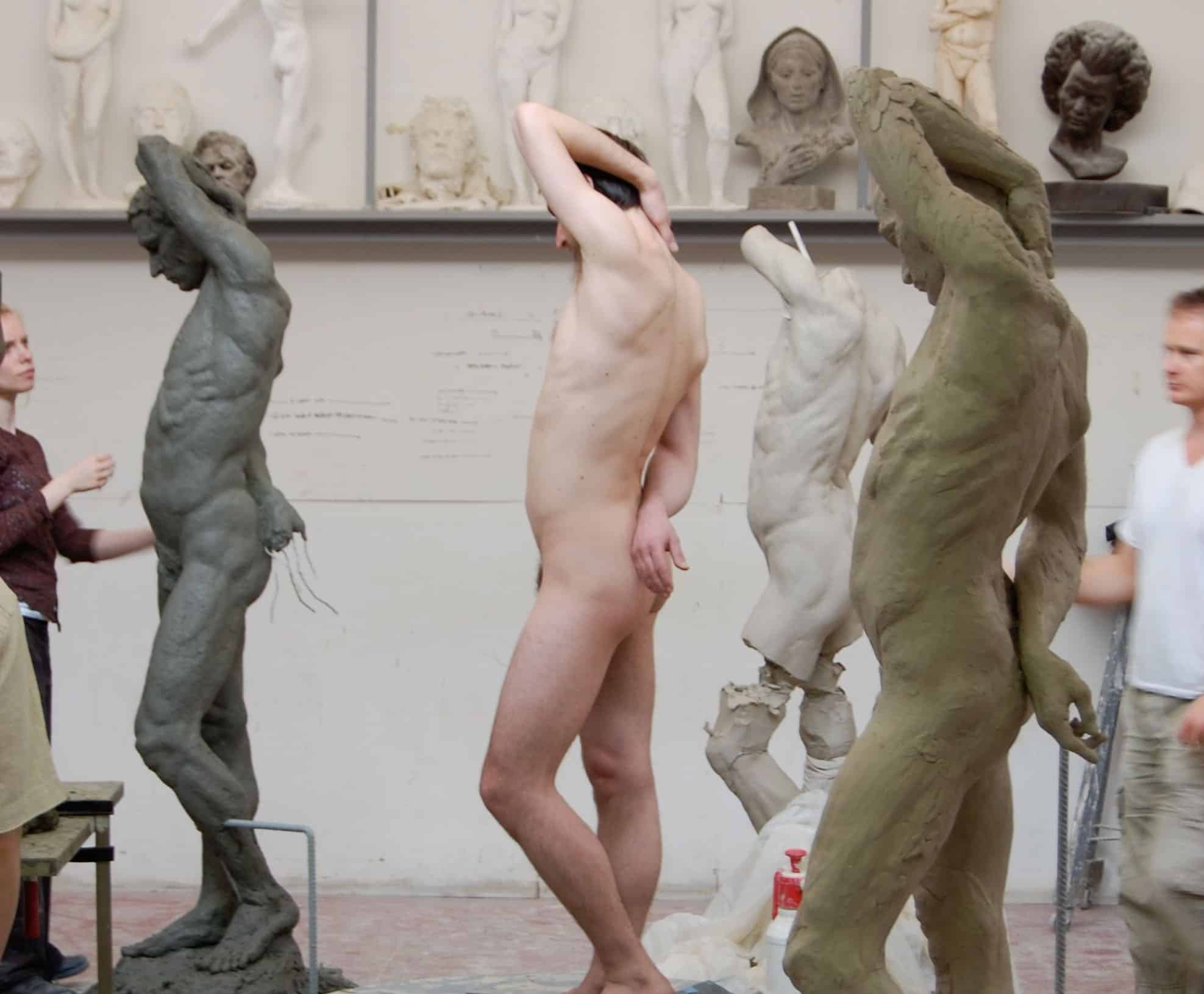
Advanced Sculpture
3rd year | 22.5 credits
The student’s observational skills are challenged to understand and use internal structures that visually disappear.
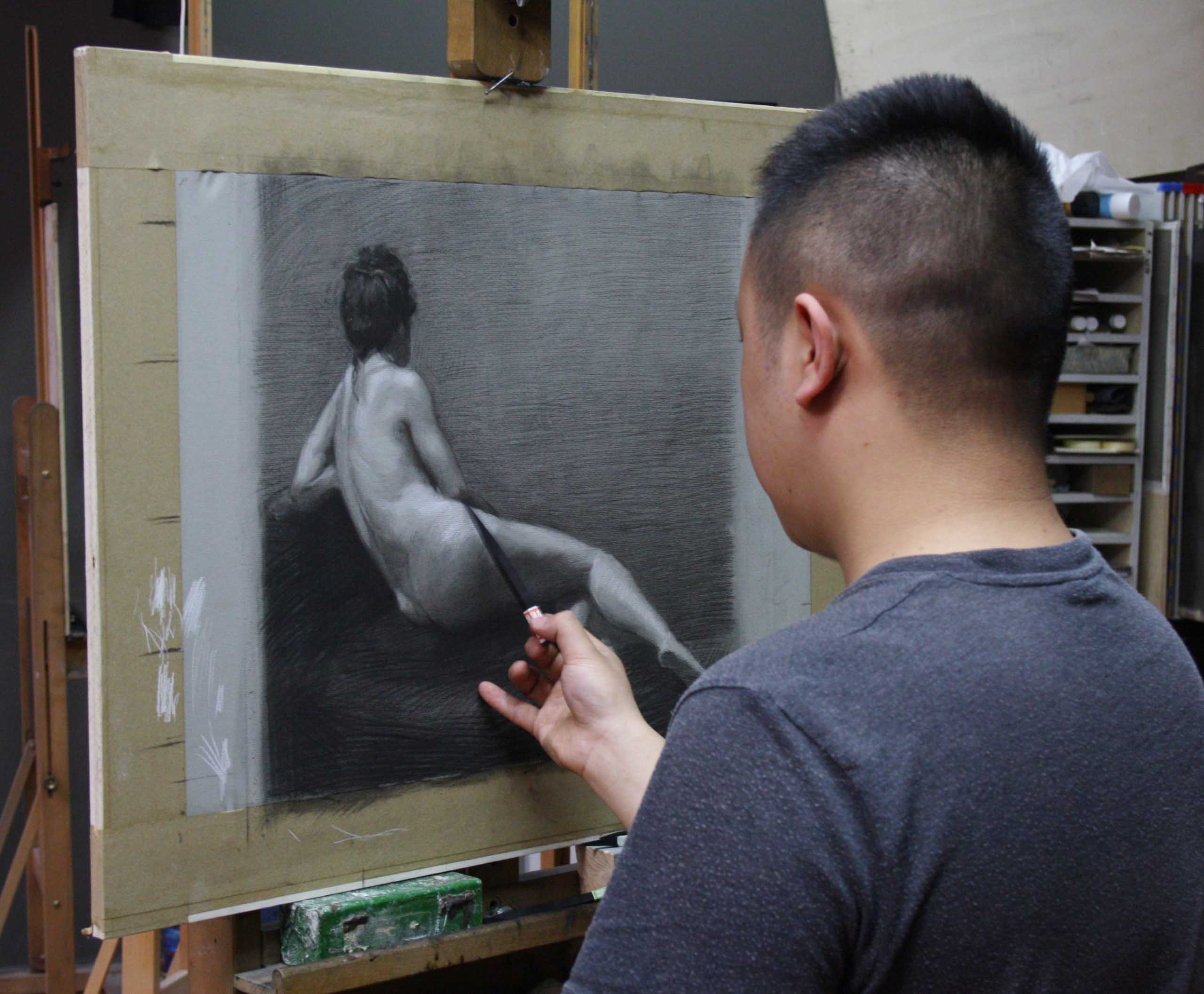
Sculpture Drawing
3rd year | 22.5 credits
When students are able to achieve an accurate rendering in 2 dimensions they can apply this knowledge to the more complex task of making sculpture.




